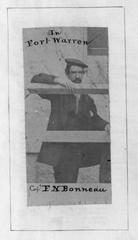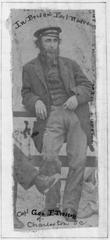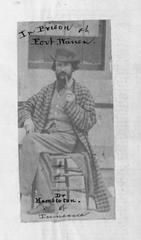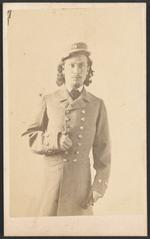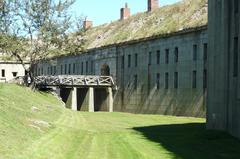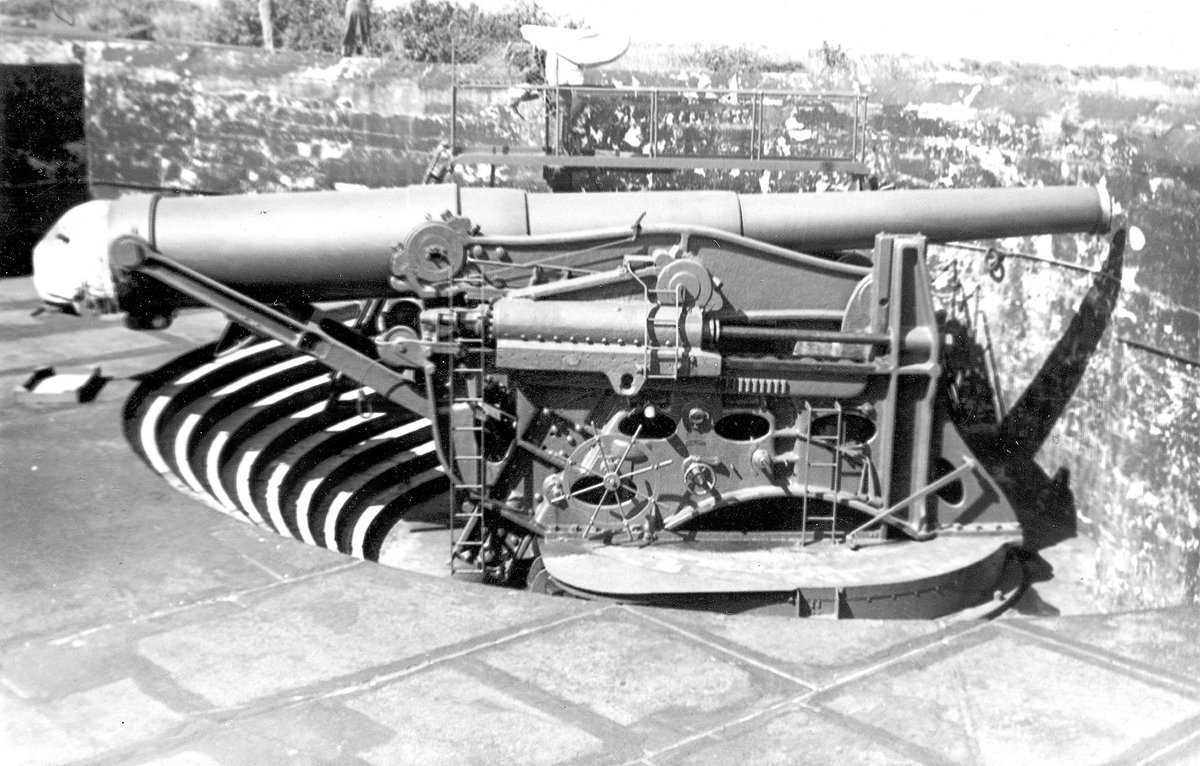
Fort Warren Visiting Hours, Tickets, and Travel Guide: Boston Historical Sites
Date: 14/06/2025
Introduction: Discovering Fort Warren—Boston’s Coastal Fortress
Located on Georges Island at the entrance of Boston Harbor, Fort Warren is a National Historic Landmark that has played a pivotal role in more than a century of American coastal defense. Constructed between 1833 and 1861, this formidable granite bastion reflects both military ingenuity and evolving U.S. history—from the post-War of 1812 era through World War II. Today, visitors can explore its storied past, architectural marvels, and scenic harbor vistas, all accessible via seasonal ferry service. Whether you’re a history enthusiast, family adventurer, or cultural explorer, Fort Warren offers an immersive experience with guided tours, educational programs, and opportunities to engage with Boston’s maritime legacy (NPS.gov; History Hit; Boston Harbor Islands).
Table of Contents
- Early Strategic Importance and Site Selection
- Design and Construction: The Third System Era
- Civil War Role and Prison Use
- Post-Civil War Modernization and the Endicott Era
- 20th Century Service: World Wars and Deactivation
- Preservation and Landmark Status
- Visiting Fort Warren: Hours, Tickets, and Access
- Architectural Features and Military Engineering
- Folklore and Cultural Legacy
- Modern-Day Interpretation and Events
- Accessibility and Amenities
- Frequently Asked Questions (FAQ)
- Practical Tips for Visitors
- Conclusion & Final Tips
Early Strategic Importance and Site Selection
Following vulnerabilities exposed during the War of 1812, U.S. military planners identified Georges Island as a prime defensive outpost for Boston Harbor. The U.S. Army Corps of Engineers selected this location for its commanding views and control over vital shipping channels, enabling it to safeguard Boston from naval threats (NPS.gov).
Design and Construction: The Third System Era
Fort Warren was conceived as part of the national “Third System” of coastal fortifications, initiated to modernize American defenses. Construction began in 1834, with the fort’s pentagonal design—featuring five bastions, curtain walls, and a protective moat—reflecting the latest military engineering of the era. Built from robust Quincy granite, the fort could house up to 2,500 soldiers and included essential features like a sally port (main entrance), ravelin (triangular outwork), and powder magazines (Tourist Secrets).
Civil War Role and Prison Use
Completed on the eve of the Civil War, Fort Warren served as a critical Union stronghold. It was a key training site and, notably, a prison for Confederate leaders, including Vice President Alexander H. Stephens and diplomats from the Trent Affair. Uniquely, it was known for its humane treatment of prisoners, allowing correspondence, visits, and recreation, which was rare for the era (Tourist Secrets; Legends of America).
Post-Civil War Modernization and the Endicott Era
Technological advancements in artillery and naval warfare rendered many old fortifications obsolete. The Endicott Board (est. 1885) called for modernization, adding new concrete batteries equipped with 3-inch to 12-inch rifled guns and mine casemates for harbor defense. These updates sustained Fort Warren’s defensive relevance into the early 20th century (NPS.gov).
20th Century Service: World Wars and Deactivation
Fort Warren continued to serve during the Spanish-American War, World War I, and World War II, adapting to changing defense needs. It functioned as a training center and managed defensive mines, but its guns were never fired in combat. By 1950, with the rise of airpower and missile technology, the fort was decommissioned (History Tools).
Preservation and Landmark Status
Recognizing its historical significance, the Commonwealth of Massachusetts acquired Fort Warren and Georges Island in 1958. The fort was designated a National Historic Landmark in 1970 and became a focal point within the Boston Harbor Islands State Park, ensuring its preservation for future generations (Wikipedia).
Visiting Fort Warren: Hours, Tickets, and Access
Hours and Seasonality
- Open: Late May through mid-October, generally 10:00 AM–5:00 PM.
- Note: Hours may vary; always check the Boston Harbor Islands site for current information.
Tickets and Ferry Service
- Access: Only by ferry from Boston’s Long Wharf North, Hingham, or Hull.
- Ferry Tickets (2024):
- Adults: $19.95
- Children (3–12): $12.95
- Seniors/Students/Military: $14.95
- Family 4-pack: $49
- 10-ride/Season passes available (Boston Harbor Cruises)
- Admission: Included with ferry ticket; no separate fort entry fee.
- Advance Purchase: Strongly recommended, especially during weekends and holidays.
Transportation
- Ferry Duration: 40–50 minutes from Boston; ferries also depart from Hingham and Hull (Boston Discovery Guide).
- Parking: Available near ferry terminals; MBTA accessible from Long Wharf.
Architectural Features and Military Engineering
Fort Warren’s pentagonal granite structure showcases 19th-century military engineering:
- Bastions: Five projecting bastions for overlapping defensive fire.
- Moat: Deep ditch along several walls, originally filled with water.
- Sally Port: Main fortified entrance.
- Casemates and Terrepleins: Artillery positions and gun platforms.
- Parade Ground: Heart of the fort for drills and ceremonies.
- Powder Magazines: Secure storage for munitions (Wikipedia).
Folklore and Cultural Legacy
Fort Warren is famous for the legend of the “Lady in Black”—said to haunt the fort’s dungeons after a failed rescue attempt of her Confederate husband. This ghostly tale adds a layer of intrigue for visitors (Legends of America; Travel2Next).
The fort is also the reputed birthplace of the Union marching song “John Brown’s Body,” connecting it to American cultural history (Emerging Civil War).
Modern-Day Interpretation and Events
Today, Fort Warren hosts ranger-led tours, living history events, reenactments, and interactive children’s programs. The Visitor Center provides maps, exhibits, and historical context. Seasonal events include music performances, art exhibits, vintage “base ball” games, and educational workshops (Boston Harbor Islands; Tripster).
Accessibility and Amenities
- Wheelchair/Stroller Access: Paved island paths and ferry are accessible, though some fort interiors have stairs and uneven surfaces.
- Facilities: Restrooms, picnic areas (some covered), water fountains, and a seasonal snack stand.
- Visitor Center: Offers exhibits, ranger information, and a small gift shop.
- Picnicking: Encouraged; carry in, carry out trash policy.
- Pets: Only service animals permitted.
Frequently Asked Questions (FAQ)
Q: What are Fort Warren’s visiting hours?
A: Typically open from late May through mid-October, 10:00 AM–5:00 PM. Check the official website for updates.
Q: How do I buy tickets?
A: Purchase ferry tickets online via Boston Harbor Cruises, by phone, or at the terminal.
Q: Is Fort Warren wheelchair accessible?
A: Main paths and the ferry are accessible; some historic sections have limited access.
Q: Are guided tours available?
A: Yes, ranger-led and special themed tours are offered during the season.
Q: Can I bring food?
A: Yes, picnics are welcome; a snack shack operates seasonally.
Q: Are pets allowed?
A: Only service animals are permitted.
Practical Tips for Visitors
- Plan Ahead: Always check ferry schedules and ticket availability in advance.
- Pack Smart: Bring water, snacks, sun protection, and comfortable walking shoes.
- Weather: Dress in layers; the island is exposed to wind and sun.
- Accessibility: Consult park staff for accessible routes.
- Photography: The site offers excellent spots for photos; drones are prohibited.
- Download the App: Use the Boston Harbor Islands app for self-guided tours (PocketSights).
Conclusion & Final Tips
Fort Warren stands as a testament to Boston’s coastal defense heritage and American ingenuity. Its preserved granite walls, military innovations, and evocative legends provide a compelling destination for both education and recreation. By planning ahead—checking ferry schedules, purchasing tickets in advance, and preparing for seasonal weather—you can fully enjoy guided tours, interactive exhibits, and the stunning panorama of Boston Harbor. For continuous updates and curated audio tours, download the Audiala app and explore more of Boston’s rich history.
References
- Fort Warren Official Site (NPS.gov)
- History and Visitor Information (History Hit)
- Boston Harbor Islands—Georges Island (Boston Harbor Islands)
- Ferry and Visitor Guide (Boston Discovery Guide)
- Fort Warren Secrets and History (Tourist Secrets)
- Legends and Hauntings (Legends of America)
- Additional historical context and visitor experiences (Travel2Next), (Emerging Civil War), (Tripster), (My Itchy Travel Feet), (Wikipedia), (History Tools), (NPPlan.com), (Live La Vida), (Holidify)

